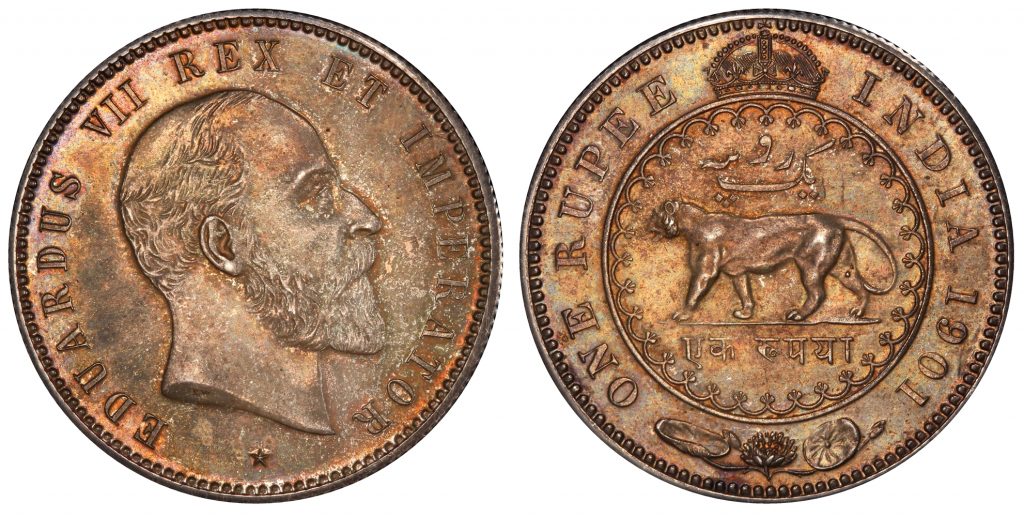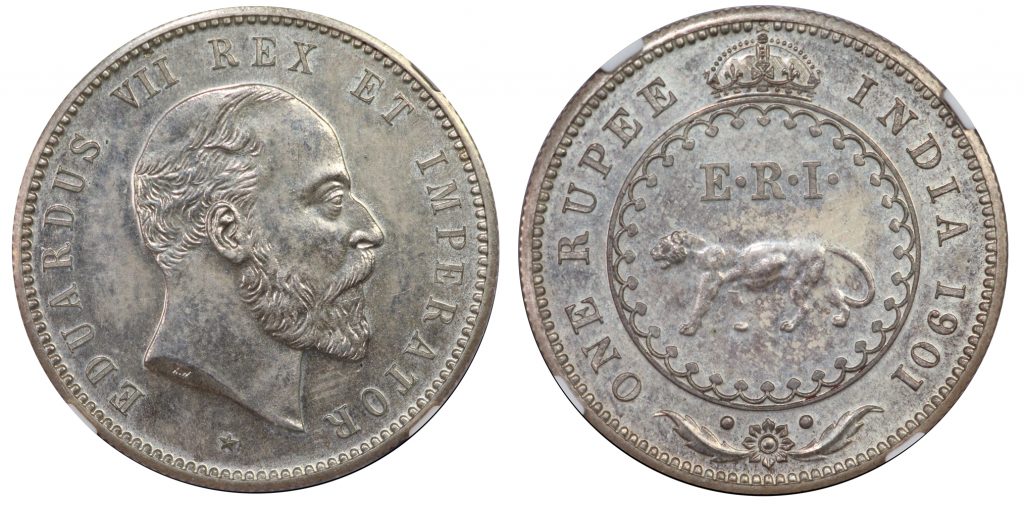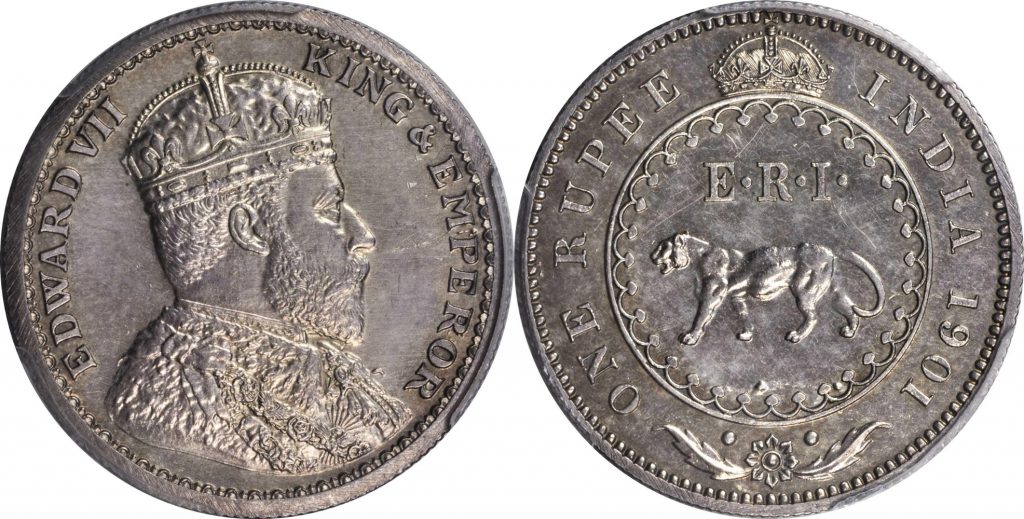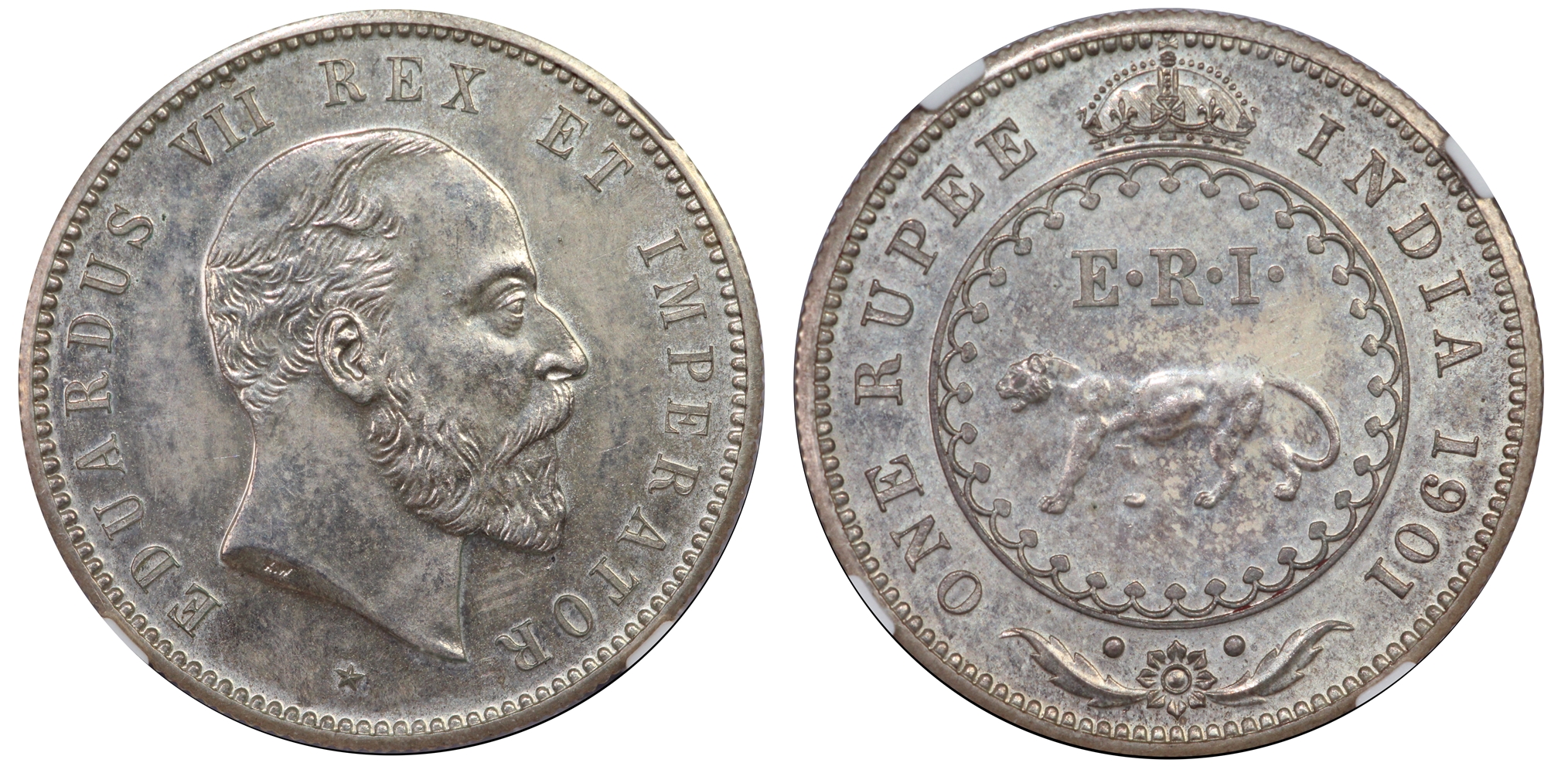Queen Victoria died on 22nd January 1901. The designs for the new coinage were begun almost immediately in Calcutta and were sent to the Royal Mint for their consideration. The officials at the Royal Mint were not complimentary and further designs were called for. After much discussion and debate, designs were submitted to the new King in April 1902, and, diplomatically, he selected the uncrowned obverse, designed at the Royal Mint, and a simple reverse designed at the Calcutta Mint. The other option was the crowned obverse.
During July 1902 punches and matrices were prepared at the Royal Mint and sent to Calcutta. These were found to be unsuitable and further modifications had to be made so that it was not until January 1903 that coins with the effigy and title of Edward VII could actually be put into circulation. In the meantime, throughout 1901 and 1902, coins issued into circulation continued in the style of the 1901 Victorian designs.
The patterns in 1901 were prepared by, F K Wezel, who was the mint engraver from 1897-1904 at the Calcutta Mint. The two Patterns that F K Wezel produced were quite beautiful in themselves but may not have been sturdy enough to stand up to the rigours of circulation. The mintages for Edward would demand a great number of dies.

On the reverse is an Indian tiger standing facing left. The value in Persian above and in Hindi below. All within a decoratively arched circle with a crown above and a lotus flower below. ONE RUPEE & INDIA 1901 divided by crown. Similar to the obverse, with a raised, toothed rim. The official weight of this pattern is 11.59gms and the diameter is 30.8-30.9mm. The edges are straight grained and the coin is medal aligned. The coin here is graded by PCGS as an original proof and is one of the 4 known to exist (including restrikes). Pridmore has it as PR1045 in his book were as this coin is SW7.10 as per Stephen’s & Weir’s book.
The second pattern has the same obverse (Bare head of the King facing right. K.W incuse on the truncation of the neck. Around this is the legend that reads, EDUARDUS VII REX ET IMPERATOR. All within a raised, toothed rim.), however, the reverse has an Indian tiger standing facing left with Initials E.R.I. above. Also, note the value in Hindi is missing in this design.
One of the unusual thing with the 1901 pattern rupees is that Latin was used for the obverse inscription EDWARDUS VII REX ET IMPERATOR
Pridmore has it as PR1046 in his book were as this coin is SW7.20 as per Stephen’s & Weir’s book. This coin is graded by NGC as PF 63, Original Proof.

The Reverse is similar to the first pattern, PR1046, with an Indian tiger standing facing left. The value in Persian above and in Hindi below. All within a decoratively arched circle with a crown above and a lotus flower below. ONE RUPEE & INDIA 1901 divided by crown. Similar to the obverse, with a raised, toothed rim. The official weight of this pattern is 11.59gms and the diameter is 30.5mm. The edges are straight grained and the coin is medal aligned. This coin is graded by NGC as PF 63. (SW7.60)

Reference:
– Picture credits: The first & the third pattern coins belong to my dear friend – RMK & the second pattern is part of my collection
– Baldwins Auctions
– SW Catalog – Uniform coinage of India, 1835 to 1947, Randy Weir & Paul Stevens
